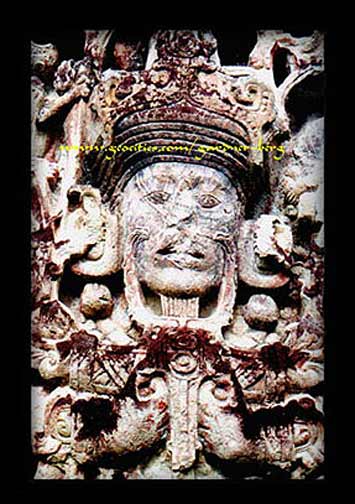
Stela C, Great 18 Rabbit, Great Plaza of Copan, HONDURAS
| Translate: Espa˝ol - Franšais - Deutsch - Italiano - Portuguŕs - Japanese - Korean - Chinese |

Stela C, Great 18 Rabbit, Great Plaza of Copan, HONDURAS
| Translate: Espa˝ol - Franšais - Deutsch - Italiano - Portuguŕs - Japanese - Korean - Chinese |


September 15, 1999 -- The ruins of Copan marks the final
point of La Ruta Maya (The Mayan Route). Our last
ancient Mayan city also holds what is considered the
greatest collection of Mayan sculpture ever found,
showing images of past rulers with inscriptions
recording important events during their reign from
time of birth to time of death. The Hieroglyphic
Stairway leading up a pyramid is the only one of
its kind found where each step is inscribed - all of
which is not fully understood because all the bricks
were found in disarray upon discovery. Researchers
theorize that the 63 inscribed steps represent the
lineage tree of Copan┤s 14 rulers. Continued
archeological studies and excavations have led to the
building of tunnels directly under the site itself
for archeologists to view Copan┤s urban structure.
There are now 4 kms of tunnels built so far, revealing
important tombs and two temples - Rosalila and
Margarita, both found completely intact and protected
from outside elements. From March of this year two
tunnels were open for public viewing but for an extra
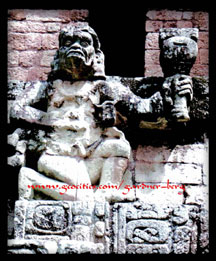 charge. We didn┤t like that so we decided then to
give them a miss. It must have been our lucky day. We
were approached by one of the guards who was quite
passionate about the ruins - he was actually well
versed in Pre-Columbian history. He must have sensed
our disappointment in the cost of viewing the tunnels
and we expressed in broken Spanish that this is our last
Mayan site on our way to South America. So he
whispered that he will take us in the tunnels himself
for half price. What a break! He showed us the
Galindo Tomb and Rosalila Temple with a full run down
of who built them, the inscriptions on the temples,
where the granite building blocks came from and how
they were cut. He even took us to one of the
restricted access tunnels reserved only for reseachers
for a brief look at the stucco mascarones (masks)
below the public tunnel. He said that these temples
were so sacred that the ancients built over and around
them rather than destroy them during the city┤s
expansion. It was certainly one of the highlights of
La Ruta Maya.
charge. We didn┤t like that so we decided then to
give them a miss. It must have been our lucky day. We
were approached by one of the guards who was quite
passionate about the ruins - he was actually well
versed in Pre-Columbian history. He must have sensed
our disappointment in the cost of viewing the tunnels
and we expressed in broken Spanish that this is our last
Mayan site on our way to South America. So he
whispered that he will take us in the tunnels himself
for half price. What a break! He showed us the
Galindo Tomb and Rosalila Temple with a full run down
of who built them, the inscriptions on the temples,
where the granite building blocks came from and how
they were cut. He even took us to one of the
restricted access tunnels reserved only for reseachers
for a brief look at the stucco mascarones (masks)
below the public tunnel. He said that these temples
were so sacred that the ancients built over and around
them rather than destroy them during the city┤s
expansion. It was certainly one of the highlights of
La Ruta Maya.
 September 16, 1999 -- We leave Copan and head westward to La
Ceiba via San Pedro Sula on the Caribbean coast, then
took a ferry to the island of Utila for relaxation.
This tiny island is very popular for low cost scuba
diving - land relatively undeveloped - climate extremely humid.
September 16, 1999 -- We leave Copan and head westward to La
Ceiba via San Pedro Sula on the Caribbean coast, then
took a ferry to the island of Utila for relaxation.
This tiny island is very popular for low cost scuba
diving - land relatively undeveloped - climate extremely humid.
Like the other Central American countries, Honduras is
rich in plant and wildlife, providing a picturesque
and tranquil environment especially in the highlands
surrounding its capital and the biosphere reserve of
the Mosquitia region. Economically, however, Honduras
is not doing too good. Relatively fresh out of the
Contra War period in the 80┤s and many government
scandals and corruption in the early 90┤s, it GNP is
one of the lowest in Central America; exchange rate
continually plummeting with an accumulation of a very
large foreign debt. But looking around here and there
we see signs of progress. The 3 main cities; La Ceiba,
San Pedro Sula, and its capital Tegucigalpa are
bustling and are of modern standards. The people of
Honduras are interesting to look at. Everywhere, you
will see sandy to blonde hair, hazel to green eyes,
olive to very pale skin and nordic facial features all
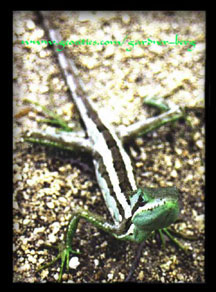 speaking Spanish - it was incredible to watch and
listen. This is the Spanish-Indian mixture called
mestizo which makes up around 90% of the Honduran
population. Pure Indians taking 7% live in the more
isolated regions and Garifuna ( Indian, Carib and
African mixture), descendents of Jamaica and West
Indies that mainly reside along the north coast make
up approximately 3%.
speaking Spanish - it was incredible to watch and
listen. This is the Spanish-Indian mixture called
mestizo which makes up around 90% of the Honduran
population. Pure Indians taking 7% live in the more
isolated regions and Garifuna ( Indian, Carib and
African mixture), descendents of Jamaica and West
Indies that mainly reside along the north coast make
up approximately 3%.
September 22, 1999 -- Onward south to the Honduran Capital Tegucigalpa (9 hour bus ride).
Sepetember 23, 1999 -- Bus from Tegucigalpa heading south to
the Nicaraguan border near Guasaule. The road from the
border to Nicaragua┤s capital, Managua, was paved but
terribly pot-holed with the trucks and buses (including
ours) zigzagging all over the place to avoid them and
each other. Again, we follow the long chain of
volcanos on our way there. Managua is set on the
southern edge of a lake of the same name. This city
and its people have weathered several natural and
man-made disasters during its period of development.
Completely destroyed from an earthquake on 1931 then
swept by fire 5 years later, it was rebuilt as a
modern capital and commercial city of that time.
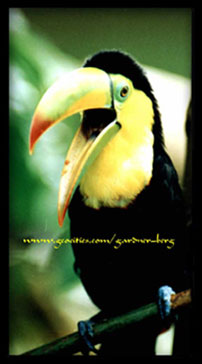 Another earthquake in 1972 wiped out almost all the
buildings, but the problem of maintaining its
flattened landscape was "solved" by the Revolution of
1978-79. After a decision was made not to rebuild due
to faults found under the downtown area, the city
decentralized and now it spreads itself around the
south of the lake and its still growing.
Another earthquake in 1972 wiped out almost all the
buildings, but the problem of maintaining its
flattened landscape was "solved" by the Revolution of
1978-79. After a decision was made not to rebuild due
to faults found under the downtown area, the city
decentralized and now it spreads itself around the
south of the lake and its still growing.
September 29, 1999 -- We have been here a week and plans
were made to visit to colonial city of Granada, the
volcanic island of Ometepe - the worlds largest island
that is located in a freshwater lake (Lago de
Nicaragua), the petroglyphs - hieroglyphs carved in
stone by the Chorolega people that occupied that area
during the Pre-Columbian period and the sacrificial
site of Masaya - a volcano used by these people to
appease the Goddess of the same name. Unfortunately,
heavy rain throughout most of this week hampered all
efforts to get to these places. So, we decided that
a detour will be necessary on our
way back up from the eastern coast of South
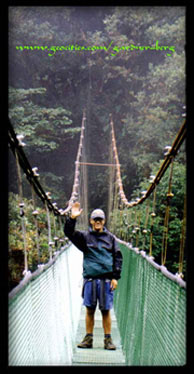 America at a later date (making sure we arrive during
the dry season.) We spent our time instead, walking
around the city, stopping in various stores to dry off
from the rain; catching up on a few movies and gouging
ourselves in fast food restaurants. It was like we
never left the U.S. An interesting sight in
Managua is its trendy young workers; immaculately
dressed, wearing cellphones on their hips. The
presence of BMWs and Mercedes vehicles along with
Asian equivalents seem to go against the stigma of
stagnancy and widespread poverty along with its "no-go
zone" label made from general media coverage. Managua is one
of the safest cities in Latin America.
America at a later date (making sure we arrive during
the dry season.) We spent our time instead, walking
around the city, stopping in various stores to dry off
from the rain; catching up on a few movies and gouging
ourselves in fast food restaurants. It was like we
never left the U.S. An interesting sight in
Managua is its trendy young workers; immaculately
dressed, wearing cellphones on their hips. The
presence of BMWs and Mercedes vehicles along with
Asian equivalents seem to go against the stigma of
stagnancy and widespread poverty along with its "no-go
zone" label made from general media coverage. Managua is one
of the safest cities in Latin America.
September 30, 1999 --We move on southward to San Jose - the
capital city of Costa Rica. The 12 hour trip involved
a border crossing at Sapoa. It was raining heavily
the entire time and since windows couldn┤t be
opened, it got to be a very stuffy bus ride. Along the
way from the border to San Jose, the bus had to stop 5
times: 4 times for passport checks and once for everyone to get out of the bus and walk across a bridge suspect of collapsing under heavy vehicles. The river
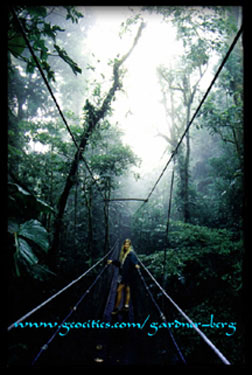 underneath was very high. Its thick brown colour is generally not a good sign. It was a terrible day, particularly for the Police and Paramedics on standby, guiding traffic one at a time and waiting for the bridge to go. Traffic was banked up for miles. Amidst all this, our concern was mainly focused on getting some air and cooling off in the rain. Arrival in the capital was 7pm. We dump our luggage at a hotel near the station and quickly head into the city centre to sample some of the country's finest cuisine: a couple of Big Macs, 2 large fries and large cokes went down very nicely. We couldn't figure out what was in the special sauce, though. But the texture of the sesame seed buns is something that cannot be matched anywhere in the world.
underneath was very high. Its thick brown colour is generally not a good sign. It was a terrible day, particularly for the Police and Paramedics on standby, guiding traffic one at a time and waiting for the bridge to go. Traffic was banked up for miles. Amidst all this, our concern was mainly focused on getting some air and cooling off in the rain. Arrival in the capital was 7pm. We dump our luggage at a hotel near the station and quickly head into the city centre to sample some of the country's finest cuisine: a couple of Big Macs, 2 large fries and large cokes went down very nicely. We couldn't figure out what was in the special sauce, though. But the texture of the sesame seed buns is something that cannot be matched anywhere in the world.
On October 11, our parents from Minnesota will arrive here for a 2-week visit. It will be a great opportinity to catch up on gossip and maybe dump some of our gear on them to take back. Our packs are getting heavier to run with as time passes on. Catching buses from station to station is becoming more of an ordeal (or maybe we're just getting out of shape).
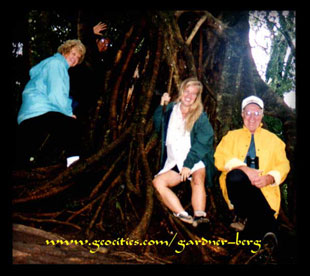 Costa Rica -- In all its provinces except one, 98% of
the population are whites and mestizos. The
exception, the province of Limon, is 33% black.
Indigenous Indians (only 5000 survive in the entire
country) are officially 'protected', but live in very
poor conditions.
Costa Rica -- In all its provinces except one, 98% of
the population are whites and mestizos. The
exception, the province of Limon, is 33% black.
Indigenous Indians (only 5000 survive in the entire
country) are officially 'protected', but live in very
poor conditions.
Economy is agriculture-based: coffee, bananas, cocoa, sugar and meat.
One interesting piece of trivia: 'Mothers Day' is a public holiday here.
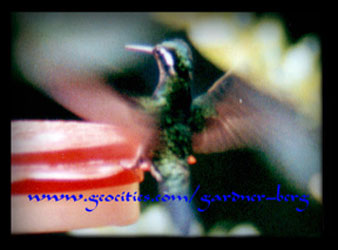 Costa Rica has a highly regarded reputation for its
support in Ecotourism. But with its Government in
favour of mass tourism development, there has been a
continuing debate between them and Ecotourism
lobbyists. In particular, arguments are currently
centred towards the beach areas of the Pacific coast
(Nicoya and Guanacaste Provinces).
Costa Rica has a highly regarded reputation for its
support in Ecotourism. But with its Government in
favour of mass tourism development, there has been a
continuing debate between them and Ecotourism
lobbyists. In particular, arguments are currently
centred towards the beach areas of the Pacific coast
(Nicoya and Guanacaste Provinces).
The land itself is somewhat divided in half by a string of volconoes running northwest to southeast. Two-thirds of the country┤s population live in an area called the Meseta Central - where the capital city (San Jose) is located.
October 11, 1999 -- We pick up our American parents from the
airport (16 kms out of San Jose).
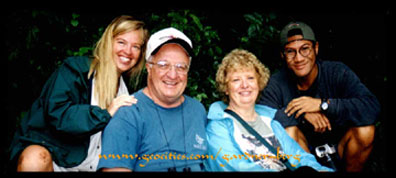
3 days were spent catching up on news from the US, and sorting out equipment brought in for us - Ziplock bags, in particular, have proven to be very valuable - as necessary as toilet paper.
October 15, 1999 -- The 4 of us take a bus to Monteverde (4 1/2 hour ride) where there is a cloud forest reserve richly diverse in plant and wildlife (over 400 species of birds and over 100 species of mammals).
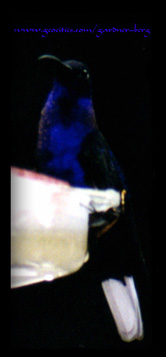 In the village centre of Santa Elena, where we stayed,
an American couple running a restaurant there told us
that at this time of year, rain is guaranteed from 1pm
onwards every day. And sure enough, on the hour, down
it came. Everyone in this area is very friendly. In
Minnesota the main subject of conversation is the
weather. In New Zealand it's work. Here in
Monteverde it's the road - unpaved, muddy at times,
and very uneven running 8 kms from Santa Elena to the
Monteverde reserve. Many of the hotels, restaurants
and tourist services are spread out along this road.
The Monteverde settlement was founded by the American
Quakers in the 1950's and much of the surrounding land
is privately owned.
In the village centre of Santa Elena, where we stayed,
an American couple running a restaurant there told us
that at this time of year, rain is guaranteed from 1pm
onwards every day. And sure enough, on the hour, down
it came. Everyone in this area is very friendly. In
Minnesota the main subject of conversation is the
weather. In New Zealand it's work. Here in
Monteverde it's the road - unpaved, muddy at times,
and very uneven running 8 kms from Santa Elena to the
Monteverde reserve. Many of the hotels, restaurants
and tourist services are spread out along this road.
The Monteverde settlement was founded by the American
Quakers in the 1950's and much of the surrounding land
is privately owned.
October 16, 1999 -- A visit to the Hummingbird Gallery - a good photo opportunity to catch masses of different kinds crowding around the feeders.
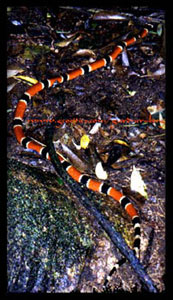 October 17, 1999 -- A walk 2 1/2 miles northeast from Santa
Elena took us to Skywalk - a nature trail linked by 7
suspension bridges at various points through the cloud
forest (the highest being 42 metres above ground).
Spectacular views on this visit.
October 17, 1999 -- A walk 2 1/2 miles northeast from Santa
Elena took us to Skywalk - a nature trail linked by 7
suspension bridges at various points through the cloud
forest (the highest being 42 metres above ground).
Spectacular views on this visit.
October 18, 1999 -- We visit Finca Ecologica to view some
wildlife. It was an amazing picture: A very misty
forest setting, very still. This is the transitional
zone between cloud and tropical dry forest but all we
could see and feel was rain, rain, rain and wet, wet,
wet! A few highlights on this 6 hour walk - a coral
snake (red and black stripes and extremely venomous);
an army of strange-looking racoon-like animals but
with a longer snout crossing our path - they were
spread out almost in a line making a clean feeding
sweep, each furiously digging as soon as a scent is
picked up. They seemed very accustomed to human presence.
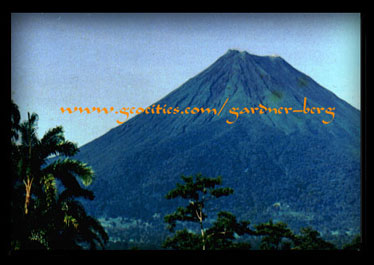 It was like we were just another 4 trees to dig
around; a steep declining path to a waterfall and a
lookout point where, on arrival, the overall view was
just thick with cloud then the wind would pick up a
little which the cloud then breaks for just a few
minutes to reveal rolling green hills far below.
It was like we were just another 4 trees to dig
around; a steep declining path to a waterfall and a
lookout point where, on arrival, the overall view was
just thick with cloud then the wind would pick up a
little which the cloud then breaks for just a few
minutes to reveal rolling green hills far below.
October 19, 1999 -- We leave Santa Elena and head south to Fortuna to view the lakeside volcano - Volcan Arenal. One great way to see the volcano is at night from the Tabacon Resort. This place has in its 'backyard' several hot pools of different temperatures scattered around in a beautiful setting. We sat back comfortably with a drink in hand and watched glowing red lava oozing down the volcanic slope of Arenal.
 October 21, 1999 -- Bus from Fortuna back to San Jose; a nice
ride back with views of the country┤s rolling green
hills patched with coffee and tobacco plantations.
October 21, 1999 -- Bus from Fortuna back to San Jose; a nice
ride back with views of the country┤s rolling green
hills patched with coffee and tobacco plantations.
October 25, 1999 -- Our parents from Minneapolis head home. A lot of tears throughout the day. For 2 weeks we were living in a lap of luxury and today we watch our meal ticket take off on a Continental flight. It was very sad. Oh well, back to reality.
October 27, 1999 -- The road to Panama City was 18 hours in total along the Pan American Highway; leaving San Jose 10pm and stopping at the border at 6am for a couple of hours the following day for immigration formalities.
A horizontal 'S'-shaped country, Panama is one of the great cross-roads of the world. Two-fifths of its population (total approx. 2.8 million) are concentrated in the two cities located at the entry and exit points of the canal. On December 31, 1999, Panama will assume full authority of the Canal Zone which previously, and at present, was under U.S. ownership. (We have heard that the authority may change at an earlier date.)
Like other countries in the Central American region,
Panama's history is riddled with indigenous
displacement, slave-trading, drug and contraband
movements, Government scandals and corruption and
foreign intervention. The building of the canal was a
very long process which began in 1882. There were so
many factors involved in its delay of completion; eg.
 overspending, tropical diseases (22,000 died),
engineering difficulties, disputes over changes in
ownership, civil in-fighting. The first passage
through the canal was made on 15 August, 1914. The two
people associated with the completion of the canal was
a physician and an engineer. The former was
responsible for clearing the area of the malignant
tropical diseases.
overspending, tropical diseases (22,000 died),
engineering difficulties, disputes over changes in
ownership, civil in-fighting. The first passage
through the canal was made on 15 August, 1914. The two
people associated with the completion of the canal was
a physician and an engineer. The former was
responsible for clearing the area of the malignant
tropical diseases.
October 28, 1999 -- We stayed in a rather interesting hotel in a section of the city called Casco Viejo (Old Compound) which is a small and narrow peninsula to the south of 'Bahia de Panama' (Bay of Panama). A very old hotel which still holds its colonial character despite its run-down state; a maze-like structure 3-stories high with decorated ceilings, finely-carved wooden railings along the stairwells with wrought iron railings in relief. This section of the city is currently undergoing restoration in an attempt to make Casco Viejo a tourist attraction. But personally, we preferred its current condition to remain.
November 6, 1999 -- A visit to the ruins of Panama Viejo (Old Panama)- the original capital founded August,1519. This area was used as a storage point for gold from Peru. The gold would then be transported by land on beasts of burden across the country to the Caribbean coast, loaded onto awaiting galleons on a heading to Spain. Panama Viejo soon became the centre of the New World where mines in various regions contributed up to 2 tons of gold a year. Within 60 years after its founding the town became one of extreme extravagance. To the enemies of Spain, however, it also became a 'treasure trove'. By 1671, after a 3 hour battle, the town was taken, stripped of its wealth, and then razed.
It's a very interesting walk around the remains, overlooking the bay. The coastal breeze sometimes blows hard through the stone structures making low whistling sounds. When you look out to sea, there is a large wrecked ship aground in front. Beyond it is a new freeway bridge which follows to the high and modern skyline of the new city in the distance. It's a strange and contrasting view of Panama City.
Photos and Text Copyright ę 1999-2001 Gardner-Berg. All rights reserved.
Sources of Further Reading-
Abrams, Elliot M. "How the Maya Built Their World: Energetics and Ancient Architecture" 1994.
Fash, William L. "Scribes, Warriors and Kings: The City of Copan and the Ancient Maya" Thames and Hudson, Ltd, London, 1991.
Edmisten, Patricia T. "Nicaragua Divided: La Prensa and the Chamorro Legacy" 1990.
Koster, Richard M and Sanchez, Guillermo. "In the Time of the Tyrants: Panama 1968-1990".
Paige, Jeffery M. "Coffee and Power: Revolution and the Rise of Democracy in Central America" 1997.
Randall, Margaret. "Sandeno's Daughter's Revisited: Feminism in Nicaragua" 1994.
Theroux, Paul. "The Mosquito Coast" 1996.

